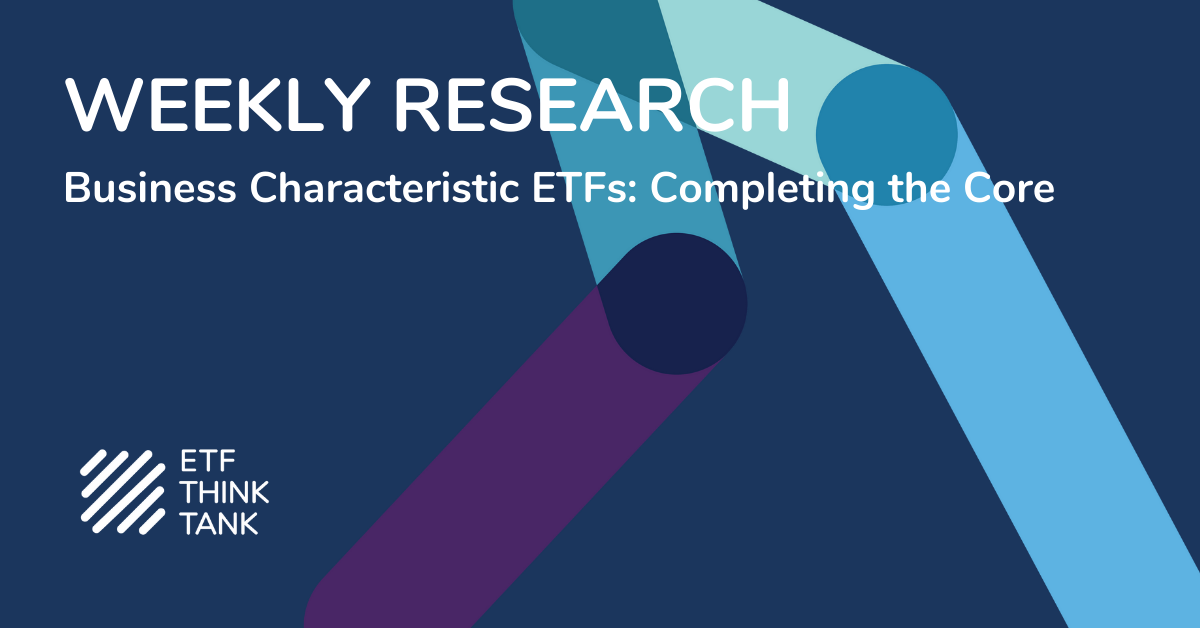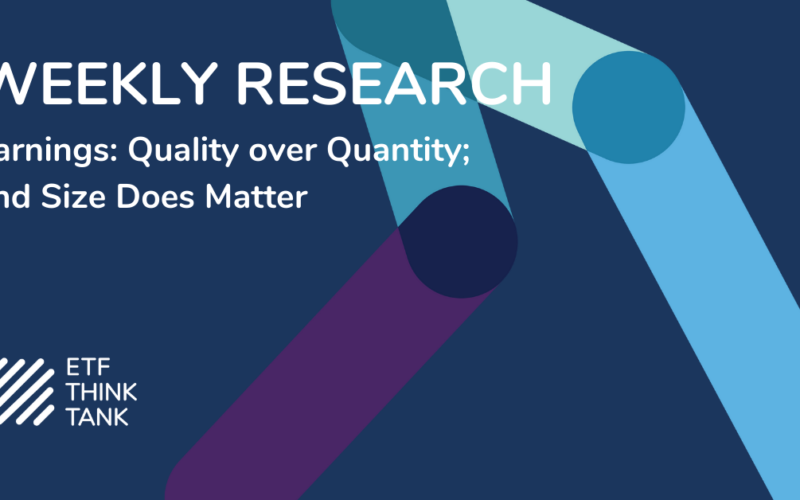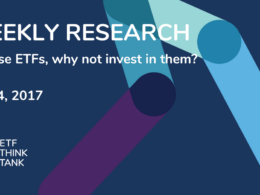At Toroso, we believe the historical returns of mainstream indexing may not be what investors should expect to receive in the future. In the past decade the indexing business has moved from a benchmarking business to an investable universe or an asset gathering business thanks, in large part, to the growth of the ETF industry. (For more detailed information on this development, please review Toroso’s November 2013 Commentary: ETFs: The Business of Indexation.)
In technical terms, market cap weighted indexes became float-adjusted market cap indexes. Companies with high levels of inside ownership receive decreased weightings in most of the major index companies. Additionally, many securities are excluded from mainstream indexes due to a number of counter intuitive indexing rules. This issue was highlighted this year with the largest IPO in history; Alibaba Group Holding Limited (NYSE: BABA). Many investors were surprised to learn that geographic rules within most popular emerging market indexes forced the exclusion of this highly sought after new issue.
Are Active ETFs the Answer?
The next logical step is to look to active management to provide access to the securities orphaned by most indexes and the excess returns they may provide. Today we are seeing a constant flow of headlines about active ETFs and significant recent rulings by the SEC regarding the active ETF structure. Toroso believes this obscures the real opportunity. Active ETF management, in our opinion, faces a substantial hurdle which will not be solved through an ETF structure. The success of an Active ETF hinges on two factors that are difficult to achieve simultaneously, since one begets the other: trading volume and performance.
Instead of trying to fit active management into an ETF format that is dependent on trading volume as a key viability statistic, we feel that the real story lies with the ETFs in the business characteristic space. This approach provides access to those characteristics that active managers target in a passive, more transparent format. We have identified 22 such ETFs listed in the Appendix.
Business characteristic ETFs are designed to provide passive access to investment strategies used by hedge fund managers and billionaires. Some focus on corporate actions, share repurchase programs, spinoffs, insider sentiment and product life cycles just to name a few. We think these ETFs allow passive investors access to the characteristics active managers seek out in a low cost, transparent and tax efficient manner. In other words, we believe these ETFs are the link between active and passive management.
The goal of this commentary is to show where investors can get access to such sought after securities in their ETF portfolios by identifying Business Characteristic ETFs that will provide simple access to a specific theme.
Examining the Overlap
We define “overlap” as the percentage of the ETF that is contained or represented by an ETF to which it is being compared. The chart below compares the percentage overlap for a selection of US-only Business Characteristic ETFs to the SPDR S&P 500 ETF (Ticker: SPY), which replicates one of the most popular indexes and is the ETF with the longest track record. In addition, we compare those Business Characteristic ETFs to the Vanguard Total Stock Market ETF (Ticker: VTI) to demonstrate the amount of overlap that these Business Characteristic ETFs have compared to another broad based ETF.

The overlap chart above shows just how different these ETFs are compared to broad based US equity market ETFs such as SPY and VTI. These ETFs can provide access to the securities and themes that active managers will often pay a premium to purchase.
Domestic Business Characteristic ETFs
1) ETFs Based on the Actions of Others. GURU, GURX, ALFA, IBLN all seek to provide exposure to the conviction holdings of hedge funds or billionaires. This is a common practice in the active management world that has helped to generate alpha for many fund managers. Each of these take different approaches to execution, most are equal weighted and focus on equities of all capitalizations, but with a large cap bias. GURX from Global X Funds is an exception and dedicated to small caps. AlphaClone Alternative Alpha ETF (Ticker: ALFA) is unique in that it has a built-in hedging mechanism against the S&P 500, which is triggered by moving averages, and the portfolio is weighted based on hedge fund conviction. The commonality has been excess returns as evidenced by ALFA and GURU, which have the longest history:

2) ETFs Based on the Actions of Insiders. The Direxion All Cap Insider Sentiment Shares (Ticker: KNOW) and the Guggenheim Insider Sentiment ETF (Ticker: NFO) come from two different ETF sponsors and use the same index provider, Sabrient Systems, LLC. Amazingly, these two funds with seemingly similar mandates and a common index provider only have 19% holdings overlap. This is why the evaluation of these ETFs and their underlying indexes is so important. Again, the commonality is performance but the true story is tax efficiency. KNOW for example has 920% turnover according to Morningstar; and in 2013 the fund was up 33% with no capital gains distribution.
3) ETFs Based on the Actions of the Companies. Many of the other Business Characteristics ETFs focus on the actions of the companies themselves, rather than hedge fund managers or insiders. The biggest success story is the PowerShares BuyBack Achievers Portfolio (Ticker: PKW), which now has over $2.5 billion in assets. The AdvisorShares TrimTabs Float Shrink ETF (Ticker: TTFS) has a similar mandate and performance but substantially less assets, which is likely to be a result of its active, rather than passive, ETF structure. Other interesting ETFs in this sub-category of “company actions” include the Guggenheim Spin-Off ETF (Ticker: CSD) and USCF Stock Split Index Fund (Ticker: TOFR). Also, there are two ETFs that focus on US IPOs, the First Trust US IPO Index Fund (Ticker: FPX) and a newcomer without much performance data, the Renaissance IPO ETF (Ticker: IPO); surprisingly these two ETFs only have 18% holdings overlap.
Global and International Business Characteristic ETFs
There are only five Business Characteristic ETFs that focus on global or international companies. The PowerShares International BuyBack Achievers™ Portfolio (Ticker: IPKW) is the international version of PWK and looks for international companies that are buying back shares. Global X GuruTM International Index ETF (Ticker: GURI) is the international version of GURU from Global X Funds, which focuses on conviction hedge fund holdings in international stocks, or ADRs. Renaissance International IPO ETF (Ticker: IPOS) was recently launched and provides access to international IPOs. These are relatively new ETFs and only time will tell if they will be as successful as their US versions. The most interesting global ETF in our opinion is from EG Shares and focuses on the geography of revenue. The EGShares Blue Chip ETF (Ticker: BCHP) follows an index of 30 global blue chip companies that derive meaningful revenue from the emerging markets. In the active management world this is often referred to as emerging market linked equities.
Business Characteristic ETFs in the Fixed Income Space
The fixed income world has only one ETF currently in this space, the Fallen Angel High Yield Bond ETF (Ticker: ANGL) from Market Vectors. The index focuses on the debt of companies that had much higher credit ratings in the past. Again this has proven to produce returns superior to traditional fixed income indexes and ETFs. ANGL has outperformed both SPDR® Barclays High Yield Bond ETF (Ticker: JNK) and iShares iBoxx $ High Yield Corporate Bond ETF (Ticker: HYG) by over 500 basis points since inception in April of 2012. Toroso sees many opportunities for growth and expansion of business characteristic indexes in the fixed income space.
Completing the Core
From time to time, Toroso uses Business Characteristic ETFs to complete and enhance many of the core holdings of our clients. We have found that we can get exposure to under-owned, opportunistic securities through careful analysis of Business Characteristic ETFs. By pairing traditional market cap index based ETFs with ETFs tied to business characteristic indexes we may be able to build portfolios that behave like a portfolio of actively managed funds at a lower overall cost.
In the last 25 years ETFs have risen to prominence due to their low costs, ease of trade, transparency and tax efficiency. Our excitement about the business characteristic category is not a discredit to the original concept. But it does allow savvy investment managers the opportunity to outperform traditional index-based strategies in two possible ways:
1) Overuse of traditional market-weighted index strategies may reduce their effectiveness in helping an investor reach their investment return goals.
2) By identifying “alpha” seeking, concentrated ETFs that follow many of the techniques employed by active managers in a passive ETF format.
Therefore, we believe that the solution to mainstream index exclusion and diminishing returns does not begin with the active ETF structure debate. Toroso believes many solutions already exist in the business characteristic based ETF category; the true challenge is the proper use of these ETFs.

Disclosure
All investments involve risk, including possible loss of principal.
This material is provided for informational purposes only and should not be considered an individualized recommendation or personalized investment advice. The investment strategies mentioned may not be suitable for everyone. Each investor needs to review an investment strategy for his or her own particular situation before making any investment decision.
All expressions of opinion are subject to change without notice in reaction to shifting market conditions. Data contained herein from third party providers is obtained from what are considered reliable sources. However, its accuracy, completeness or reliability cannot be guaranteed.
Examples provided are for illustrative purposes only and not intended to be reflective of results you can expect to achieve.
The value of investments and the income from them can go down as well as up and investors may not get back the amounts originally invested, and can be affected by changes in interest rates, in exchange rates, general market conditions, political, social and economic developments and other variable factors. Investment involves risks including but not limited to, possible delays in payments and loss of income or capital. Neither Toroso nor any of its affiliates guarantees any rate of return or the return of capital invested. This commentary material is available for informational purposes only and nothing herein constitutes an offer to sell or a solicitation of an offer to buy any security and nothing herein should be construed as such. All investment strategies and investments involve risk of loss, including the possible loss of all amounts invested, and nothing herein should be construed as a guarantee of any specific outcome or profit. While we have gathered the information presented herein from sources that we believe to be reliable, we cannot guarantee the accuracy or completeness of the information presented and the information presented should not be relied upon as such. Any opinions expressed herein are our opinions and are current only as of the date of distribution, and are subject to change without notice. We disclaim any obligation to provide revised opinions in the event of changed circumstances.
The information in this material is confidential and proprietary and may not be used other than by the intended user. Neither Toroso or its affiliates or any of their officers or employees of Toroso accepts any liability whatsoever for any loss arising from any use of this material or its contents. This material may not be reproduced, distributed or published without prior written permission from Toroso. Distribution of this material may be restricted in certain jurisdictions. Any persons coming into possession of this material should seek advice for details of and observe such restrictions (if any).












